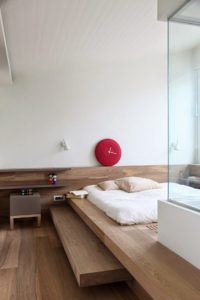Minimalist Color Palatte How To
No matter what size your apartment or house, choosing paint colors can be a daunting task. You don’t want your home to feel sterile with all white walls but neither do you want to go overboard with colors. You can find a middle ground using a minimalist color palette, made up of mostly neutrals, with a couple thoughtful pops of color.
Light Neutrals
Light Neutrals are the foundation of your minimalist color palette so chose these first and carefully. Pick up to three light neutrals such as white, light gray, tan or cream tones. Very muted shades of green or blue work too if you aren’t a fan of basic neutrals. These light colors are great for the main areas of the house such as the living and dining room because they make them appear bigger and brighter.
Dark Neutrals

Next chose a few dark neutrals to use as accents. A great way to ensure they will complement the other colors is to simply pick a darker shade of your light neutrals. For instance on The Domestic Heart blog she uses Benjamin Moore Revere Pewter and Sherwin Williams Intellectual Gray, both of which are warm beige grays, just different shades. These dark neutrals can be used for trim and accent walls in the living or dining room, or bedrooms where you may want a more peaceful and serene feel.
Pop Colors
Lastly, it’s time for a little color. Bring a subtle life into your house with pops of color that go with the neutrals you have chosen. Use no more than two brighter colors that look good together. This keeps the continuity of color in your house, and can help tie several rooms together. These statement colors are to be used only as accents, such as décor, or pictures and frames on an accent wall. Don’t paint a whole room or majority of a room with these colors. Reds and yellows or bold greens and blues are excellent choices. Have fun!
